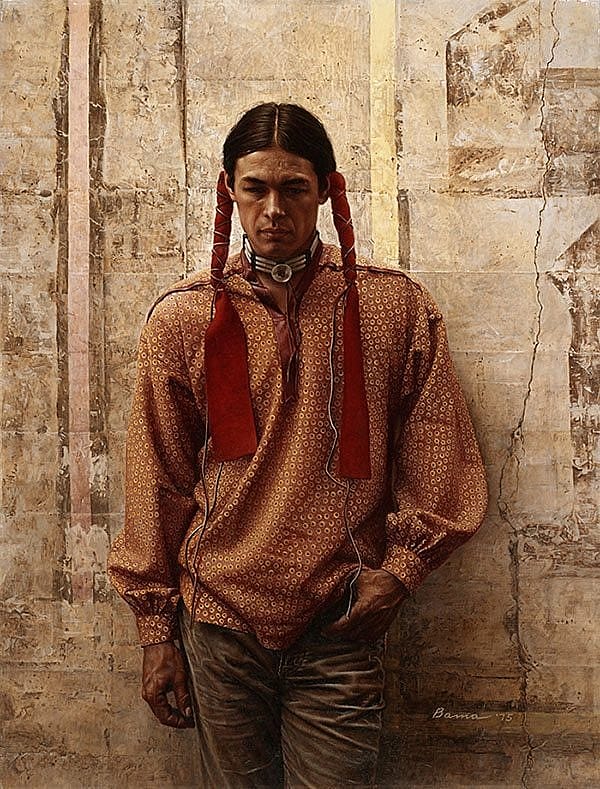
James Bama’s art captures essence of contemporary subjects – Points West Online
Originally published in Points West magazine
Summer 1998
James Bama’s art captures essence of contemporary subjects
By Rebecca West
While some may be tempted to compare the art of James Bama and that of western masters Frederic Remington or Charles Russell, Bama himself doesn’t consider such comparisons valid.
“Not in a million years!” he remarked. “Remington was a terrific painter and Russell a terrific storyteller. I just went my own way. Western art was the furthest thing from my mind.” Yet Bama has “gone his own way” in creating artwork that presents his subjects in an exquisitely realistic style while also making a statement about their place in this world.
Bama’s seamless technique and uncanny ability to capture the essence of his subjects’ characters are especially apparent in A Young Oglala Sioux. The young Sioux in the portrait, Rick Williams, does not look like the stereotypical Indian that most people want, or expect to see. A Young Oglala Sioux is not, as Bama puts it, an “Uncle Tomahawk” painting. Bama photographed Williams at an intertribal basketball and soccer tournament in Denver. Williams, considered a young militant, later appeared in a Time magazine article about a Mohawk Indian protest in upper New York State.
Bama paints contemporary young Indians such as Williams “as being part of two worlds, part modern mainstream culture and part reservation Indian.” His clothing is a mix of blue jeans and more traditional accouterments such as the ribbon shirt, choker, and wrapped braids. Bama painted his subject against a cracked and worn wall (photographed separately in Fromberg, Montana) to reinforce the idea that Williams is a modern Indian stuck in the void of a white man’s world. The artist recounted that “my major statements in recent years have been my contemporary Indians.”
A Young Oglala Sioux, 1975, oil on canvas, was the first portrait of young Indians in a series painted by Bama. Another in this series, A Contemporary Sioux Indian, is included in the exhibition Powerful Images: Portrayals of Native America. A Young Oglala Sioux was donated to the collections of the Whitney [Western Art Museum] in 1997. The painting [was, at the time of this article] on exhibition in the Recent Gifts area for the 1998 season.
Bama continues painting in his studio in Wapiti, Wyoming, his home of 30-plus years.
Post 011
Written By
Nancy McClure
Nancy now does Grants & Foundations Relations for the Center of the West's Development Department, but was formerly the Content Producer for the Center's Public Relations Department, where her work included writing and updating website content, publicizing events, copy editing, working with images, and producing the e-newsletter Western Wire. Her current job is seeking and applying for funding from government grants and private foundations. In her spare time, Nancy enjoys photography, reading, flower gardening, and playing the flute.











